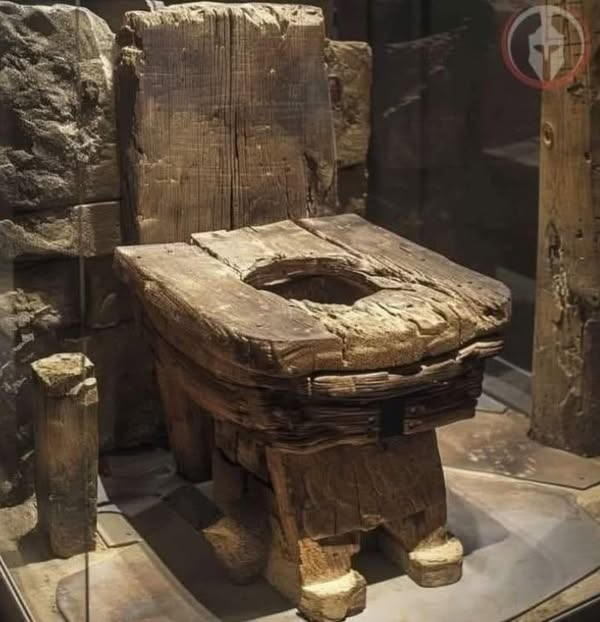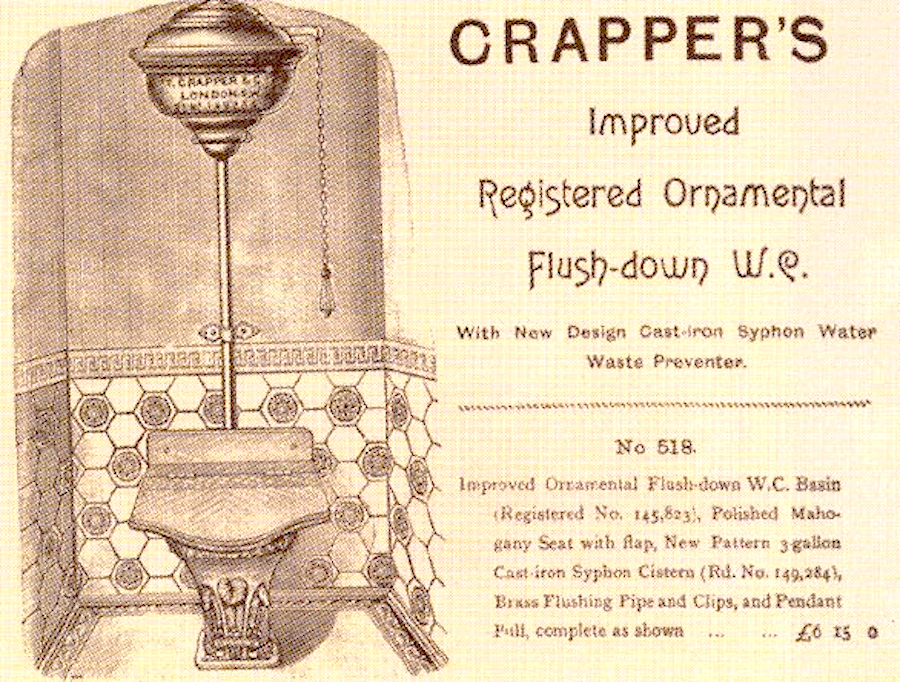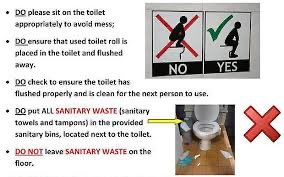Some time ago, a young boy visiting Redhead’s house asked to use the “dunny.”
The word made me smile, but it also reminded me of something more serious: toilets are about dignity. In light of the current debacle over trans rights to use female only bathrooms, it is a subject that should be brought out of the closet and considered in ALL of its implications.
Throughout history, access to safe, clean sanitation has shaped public health, social inclusion, and personal freedom.
Women and girls, in particular, have long suffered when facilities are inadequate - forced to “hold it” in fear of unclean or unsafe restrooms, putting themselves at real risk of urinary tract infections (UTIs) and long-term health problems.
From Roman latrines to Victorian innovations and modern schools, the story of toilets is a story of human progress - and one worth telling. So off we go....
Ancient Beginnings: Where It All Began
Our story starts in the dusty cities of Mesopotamia and Egypt around 3000 BCE. Ingenious folks crafted the first toilets - simple wooden or stone seats over pits, sometimes linked to primitive sewers. In the Indus Valley’s Harappa, homes boasted drainage systems that would make modern plumbers jealous. Egyptian elites sat on limestone thrones, while the less fortunate squatted over the Nile. Public facilities were rare, but communal bathhouses hinted at shared sanitation and civic order.

Located on the island of Crete and built by the advanced Minoan civilisation around 1700 BC, the Palace of Knossos contains remarkable technological innovations far beyond its time. One of its most impressive features was an advanced plumbing system that included something truly extraordinary: a working flush toilet with a wooden seat. This toilet was connected to a complex network of drainage pipes that carried waste away from the palace... an engineering feat that would not be repeated until the modern era. The drainage system also managed rainwater and distributed clean water throughout the complex, demonstrating the Minoans' remarkable understanding of hydraulics and sanitation.
Fast forward to the Roman Empire, where sanitation became a spectacle. Roman latrines were communal marvels: rows of stone seats over flowing water channels, no dividers, just good ol’ camaraderie. Picture senators debating the latest “Julius Sees Ya” gossip rag while passing the tersorium (a shared sponge-on-a-stick for wiping). With aqueducts and sewers, Rome boasted up to 144 public latrines - a sanitation peak not seen again for centuries. When folks scoff at what the Romans did for us, I think of those latrines - say what you will, but they knew how to keep things flowing.
The Middle Ages: A Smelly Step Backward
Then came the Middle Ages, and sanitation took a nosedive. After Rome’s fall, ( think about it ... ) public restrooms vanished in Europe.
No plumbing, no problem ....just chamber pots, open pits, or the nearest alley. Waste was flung into the streets with a shout of “Gardyloo!” (watch out for the water), turning cities into open sewers. Castles had garderobes - alcoves with chutes to moats – but for most, it was a grim, private affair. Disease thrived, and public facilities were a distant memory. It makes you wonder how anyone survived a stroll through medieval London.
Renaissance: Creative but Messy Solutions
The Renaissance brought art and science, but toilets lagged behind. Chamber pots were still king, emptied into streets or rivers, creating health hazards in rapidly growing cities. Some had privies or cesspits, but public restrooms were virtually nonexistent. Women, especially, faced challenges - venturing out meant risking safety or stigma with nowhere to “go.” In a pinch, folks used “piss corners” or walls, a far cry from Roman elegance. As cities expanded, innovation struggled to catch up with comfort.
Victorian Era: The Dawn of Modern Restrooms
The Victorian era, with its polished manners and hidden secrets, ushered in a sanitation revolution. Cholera outbreaks in the 1800s forced cities to act. London’s “Temples of Convenience” (1850s) introduced coin-operated public toilets - hence the phrase “spending a penny.” These were a godsend, especially for women, who gained newfound freedom to roam cities without worrying about where to relieve themselves.

Enter Thomas Crapper, the man forever (and somewhat unfairly) linked to the toilet’s name. A London plumber and inventor, Crapper didn’t invent the flush toilet, but he did revolutionise it.
He refined the syphon system that prevented overflow, patented several clever improvements, and, perhaps most importantly, marketed indoor plumbing to a public still wary of the idea. His showroom in Chelsea was a sensation, displaying gleaming porcelain basins and flush mechanisms behind plate glass.
Victorian ladies and gentlemen, scandalised yet fascinated, reportedly queued to watch his contraptions in action. Crapper’s genius wasn’t just technical...it was promotional. He turned the toilet from taboo into technology, proving that even the most private act could be an emblem of progress.
(And yes, his surname really was Crapper - a fact that must’ve made schoolyards around the world eternally grateful.)

Department stores, as I recall from my 1960s childhood, were another game-changer. As a little girl, I’d tag along with Mum to a big store’s restroom, where they had tiny toilets for kids and proper ones for adults. Sitting there, with my brothers and Dad left outside, felt like “our space” - a safe, comforting haven. These stores revolutionised women’s lives by offering clean, private facilities. This wasn’t just about convenience; it was a health win. Access to hygienic restrooms reduced the risk of urinary tract infections (UTIs) by letting women avoid prolonged holding or unsanitary alternatives.
The Aussie Dunny: A Nostalgic Relic
Now, let’s talk about the “dunny” - Australia’s beloved slang for an outhouse or toilet. Rooted in British dialects like dunnakin (a small toilet space), it became a cultural icon during colonial days. Early settlers built basic sheds far from the house to keep smells at bay, using newspaper for wiping and praying no redback spider lurked beneath. The dunny was universal yet uniquely Aussie, a gritty badge of heritage. I can still picture those freezing winter treks, clutching torn pages, hoping no critter- or worse - awaited. Universally hated yet loved, the dunny evokes nostalgia for a simpler, if smellier, time.
20th Century: Standardization and Struggles
The 20th century brought indoor plumbing and public restrooms to schools, stations, and malls. Pay-toilets faded, and facilities became free and widespread. But segregation - by gender, class, or race (e.g., Jim Crow-era U.S.) – marred progress. The Civil Rights Movement and feminist advocacy tackled these inequalities, pushing for “potty parity” as women’s public presence grew. Yet, rural areas clung to outhouses, and even today, the dunny’s legacy lingers in Australia’s vernacular.
Modern Challenges: A Health Crisis Brewing?
Today, public restrooms are battlegrounds for inclusion, safety, and health. The Americans with Disabilities Act (1990) mandated accessible stalls, while gender-neutral restrooms gained traction in the 2000s for transgender safety. Globally, 4.5 billion people still lack safe sanitation, per 2017 WHO data, sparking campaigns like World Toilet Day.
But closer to home, a troubling trend emerges: girls avoiding school toilets due to dirtiness, bullying, or strict policies. A 2021 Avon study found that one in four schoolgirls avoid toilets due to filth or fear, doubling their risk of urinary infections. Holding urine lets bacteria like E. coli multiply, with studies linking habitual holding to a two-to-threefold increase in UTI risk. About 7% of girls under six experience UTIs, and school habits can set up lifelong issues. Experts warn that without policy change, rising pediatric UTI rates could cost millions in healthcare and untold misery for kids.
Looking Forward: Lessons from the Past
History shows that sanitation drives health, freedom, and equality. The innovative Roman latrines, Victorian “Temples of Convenience,” and Thomas Crapper’s indoor plumbing all reflect society’s recognition that toilets matter....not just for comfort, but for human dignity.
Today, millions of girls avoid school or gym toilets because they are dirty, unsafe, or socially intimidating, doubling their risk of UTIs. Ensuring clean, accessible, and safe facilities isn’t a minor convenience...it is a public health imperative and a matter of basic respect. Schools, communities, and governments must act to provide restrooms that protect health, privacy, and dignity.
The humble toilet may seem ordinary, even humorous at times, but it is also a barometer of our civilisation: how we treat the most private human needs speaks volumes about how we value one another. From ancient latrines to modern smart toilets, one thing remains constant: dignity is non-negotiable.
Public spaces have largely solved the problem with simple categories - men, women, and accessible facilities. If additional facilities are required for inclusion, that is fine, but women’s spaces must remain safe, private, and protected. Ensuring clean, accessible toilets for all is not just a matter of convenience - it is a public health and human rights imperative. Maybe the answer is to have what is already commonplace in many public spaces? Men only, women only, wheelchair accessible and a fourth facility for the other 69 genders?
Shaydee
BLOG COMMENTS POWERED BY DISQUS



















































